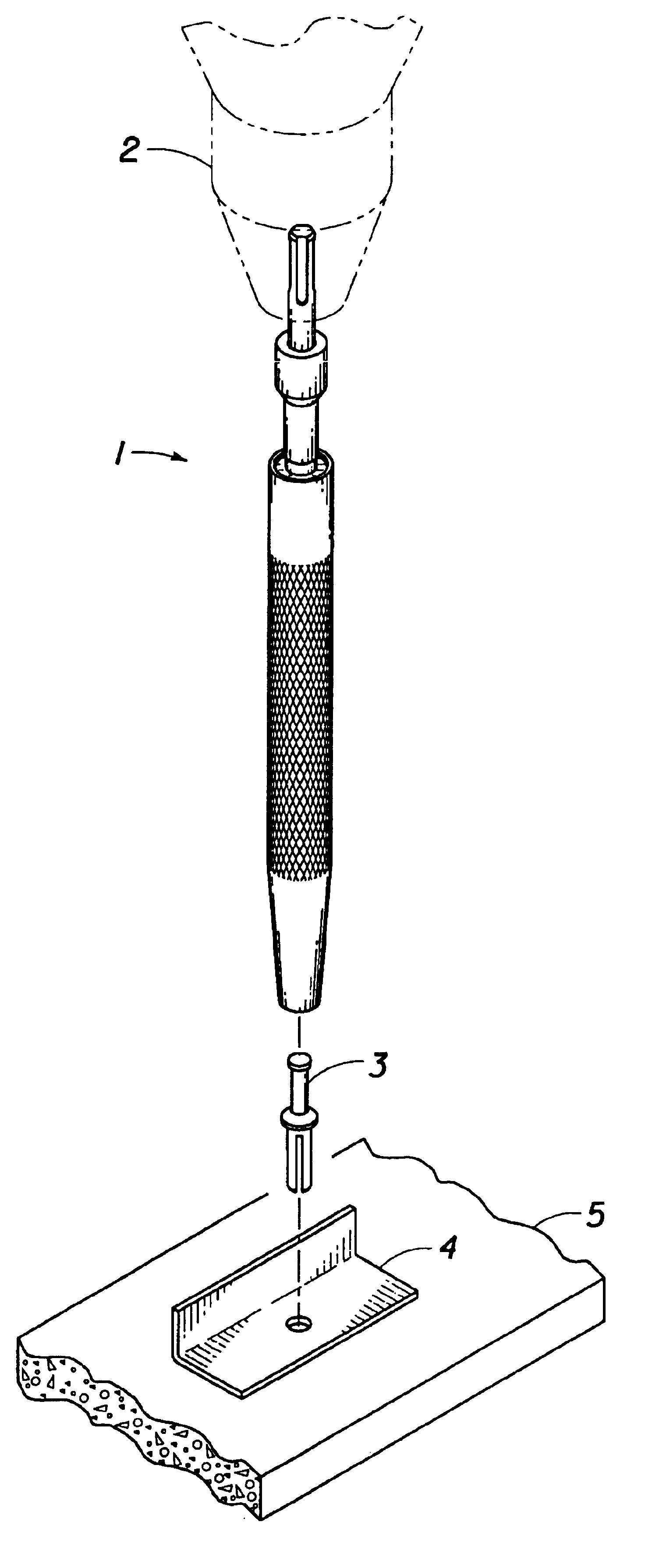Tool for installing nail-pin anchors and anchor bolts
a technology for installing nails and anchor bolts, which is applied in the direction of nail dispensers, manufacturing tools, paper/cardboard containers, etc., can solve the problems of damage to the anchor dome, inefficiency and even ineffective tools used for driving and setting nails-pin anchors, and inefficient and even ineffective tools
- Summary
- Abstract
- Description
- Claims
- Application Information
AI Technical Summary
Benefits of technology
Problems solved by technology
Method used
Image
Examples
Embodiment Construction
[0023]As shown in FIG. 1, the anchor setting tool 1 of the present invention is used with a rotary hammer drill 2 to drive a nail-pin anchor 3 through a hole in an angle iron bracket 4 and into a drilled hole in a concrete block 5 and set it.
[0024]FIG. 2 shows the assembled anchor setting tool 1. The body 6, which serves as the hand grip, is made from a hard metal such as 1 inch Barstock grade metal (such as 4140). The body 6 has knurls 7 on its surface to prevent slippage of the tool 1, as well as a tapered end 8, so that the tool 1 can be used to set anchors in a tight area, such as a channel. Inserted into the upper end of the body 1 is a ram 9 having a stem 10 and a socket end 11, into which has been inserted a masonry drill bit 12.
[0025]The sectional view in FIG. 3 shows the elements cooperating inside the body 6 of the tool 1. The tapered end 8 optionally can be milled with a concave tip 13 to fit over the dome of a nail-pin anchor or rivet. Alternatively, the tip 13 can be fl...
PUM
| Property | Measurement | Unit |
|---|---|---|
| percussive force | aaaaa | aaaaa |
| shape | aaaaa | aaaaa |
| wasting time | aaaaa | aaaaa |
Abstract
Description
Claims
Application Information
 Login to View More
Login to View More - R&D
- Intellectual Property
- Life Sciences
- Materials
- Tech Scout
- Unparalleled Data Quality
- Higher Quality Content
- 60% Fewer Hallucinations
Browse by: Latest US Patents, China's latest patents, Technical Efficacy Thesaurus, Application Domain, Technology Topic, Popular Technical Reports.
© 2025 PatSnap. All rights reserved.Legal|Privacy policy|Modern Slavery Act Transparency Statement|Sitemap|About US| Contact US: help@patsnap.com



